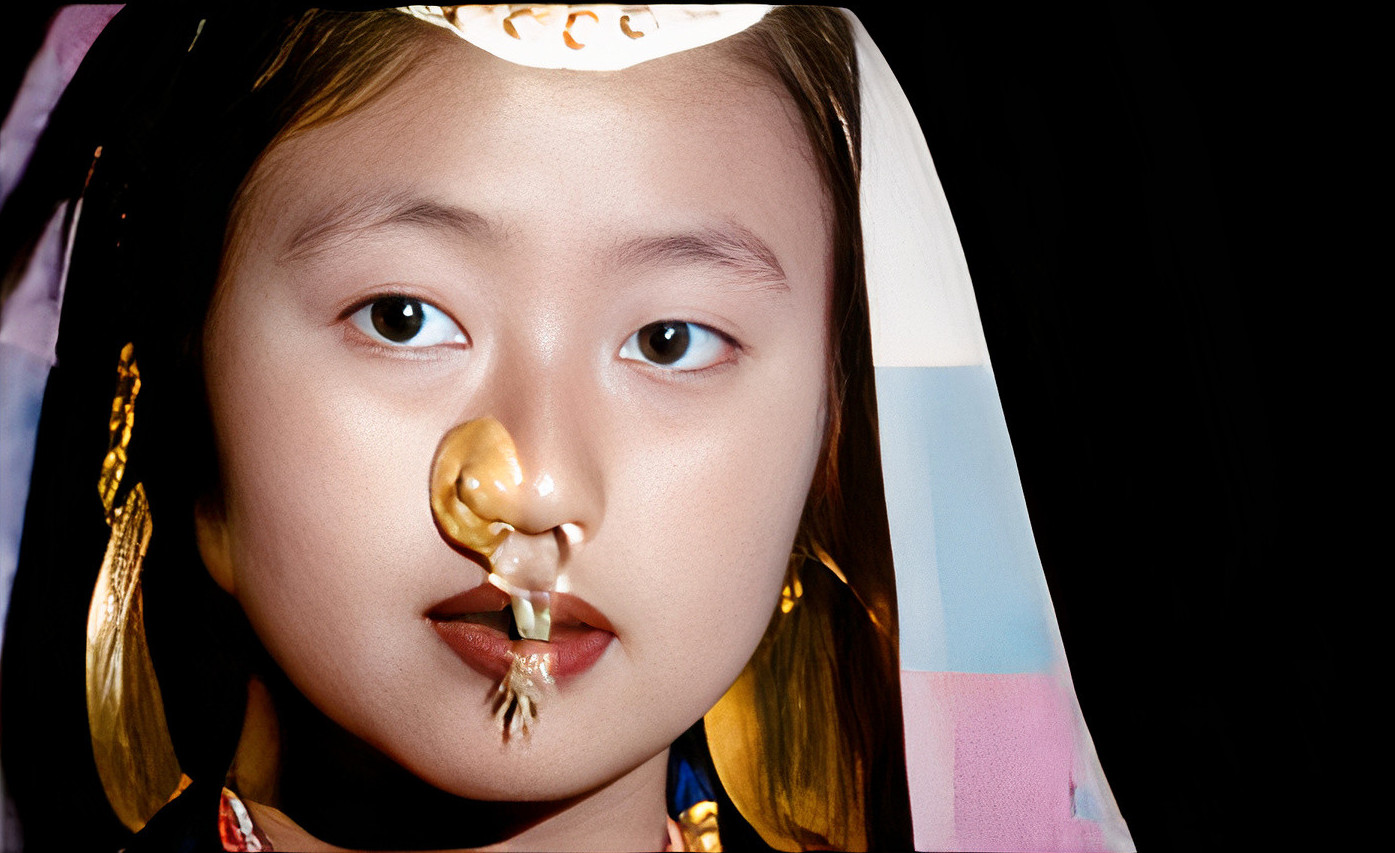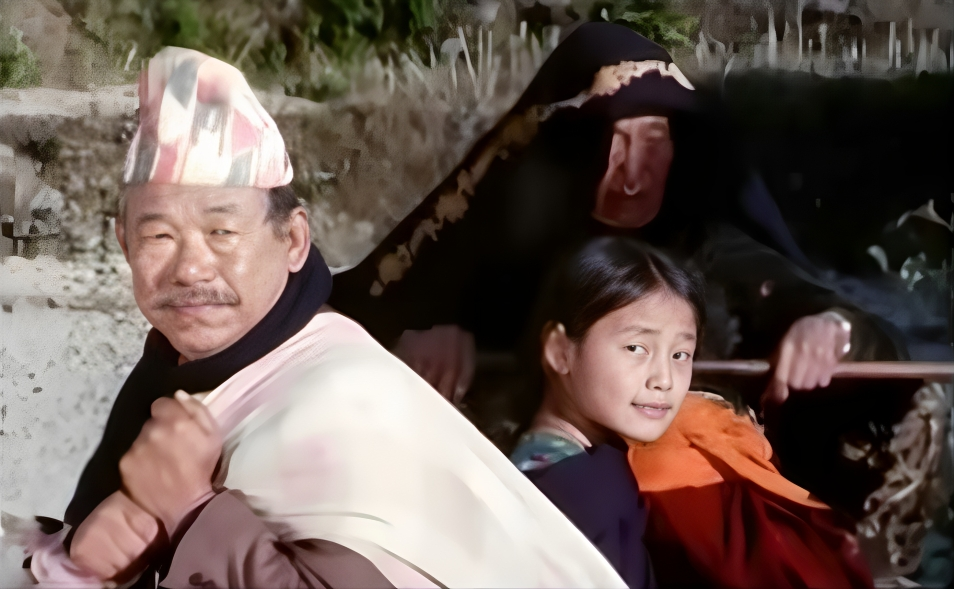Numafung | Limbu movie | Culture | Social norms | Nepali cinema | Cinematography

Lojina carries a beautiful white flower to her sister Numafung (Numa) and tucks it in her hair.
In the Limbu language, numa means ‘beautiful’ and fung means ‘flower’. Meanwhile, Lojina extracts each petal from the flower as she offers us a window to peek into her life.
The 2001 movie Numafung compels us to sit back and appreciate the poetic beauty of the movie.

While watching the movie, I mostly found myself with Lojina, as if I were one of her friends from the village she loves talking to. Almost as if she sat beside me and beautifully recited a poem to me, equally naively. Every time she recites a verse from the story, a petal falls from her hand.
She tells me about her Didi (sister) and her marriage. About her Vena (brother-in-law), Ojahang, and how he died. Also about Rikute, whom Numa fell in love with, meeting at a local fair called Yakthum Chumlung (Yakthum means Limbu and Chumlung means gathering). Her second Vena, Girihang, whom Numa got married with against her will.
Lojina despises Girihang for treating Numa horribly. After Numa flees away with Rikute as she cannot tolerate the arrogant and abusive nature of Girihang, Lojina talks about the humiliation and helplessness her Buwa (father) faced at the hands of Girihang and his family.
While I sit on the other side of the screen, it’s Lojina who lends me an eye to understand every character. She plates out the capriciousness of the story and the fate that followed the characters without any complexity.
She doesn’t stand out as a character with her own story but as a narrator. And her narration is rather subtle and unobtrusive but not imperceptible in any way. Even the flower she carries to Numa in the disparate set of frames helps unfold the latter’s frame of mind.
In one scene, when Lojina sees visitors at her home with a jar of alcohol, money, and gold, she curiously and naively asks, “What did they come to buy?” — among them is Ojahang who has come to ask for Numa’s hand in marriage. It is then she unintentionally alludes to the ‘Sunauli Rupauli’ custom to some kind of business deal.
The movie essentially covers this particular social ritual embodied in Lojina’s naive questioning.

After the demise of Ojahang, her father unwillingly accepts another Sunauli Rupauli offer from Girihang to which Numa disagrees but in vain. When Girihang visits her house as a suitor, she opposes the proposal and exclaims to her father — “Do you take me for an object to be traded?”
At the end of the movie, Lojina happens to tuck the same white flower in her hair as she did for Numa — which is symbolic of Lojina turning into a young woman who will now endure a similar hardship as that of Numa.

The two-decade-old movie Numafung displays a young woman’s trials and tribulations induced by social structures and complemented by patriarchal norms.
The sorrows, fleeting happiness, agony, dilemma, and helpless fate of Numa are displayed without any exaggeration. But the film doesn’t limit itself to nurturing a sense of victimhood, but also portrays Numa as a strong and determined woman, extending the same portrayal for other women characters in the film.
Although the oppression of male counterparts is thoroughly visible during the entire movie, the encouragement and support women have for each other in this story also can’t be overlooked.
After Ojahang’s death, Numa was treated gracefully by her mother-in-law. Similarly, Girihang’s mother stood for her with kindness. Numa’s grandmother and her friends helped her overcome the grief. These occurrences in the story reject the long-running narration that ‘women are women’s worst enemy’.
Numafung is based on a story called “Karobar ki Gharbar” written by Kaziman Kandangwa. Under the writing and direction of Nabin Subba, this movie works like a window to understanding the cultural and societal construct of the Limbu society. The customs and rituals prevailing among Limbus are introduced sublimely along with their silver linings and faults.
Moreover, the movie also touches upon language. Elders and older people speak in the Limbu language whereas the younger generation converse in Nepali — indicating the changing preferences in the language in the Limbu community.
There was also a moment of shock for me — when young Lojina who, in her child's age, was offered Tongba (an alcoholic beverage). It took me some time to realise how foreign I was to the other prevailing cultures, except for customs like Dhan-Nach, Palam, and Yakthum Chumlung. Numafung guided me to understand the context of these rituals in their own distinctness.
Cinematography
The cinematography of Raju Thapa is astounding.
Snowy mountainscapes, green pastures, and zig-zag trails on the hills of Panchthar, Sikkim, and Assam are used to their fullest and beautifully to reflect the rural setting and augment the story. The use and execution of silhouettes and reflections are alluring while photography is again simple yet beautiful.
The actors are natural in their performance, perfectly aligning their roles with the rural lives in the eastern part of Nepal. Niwahangma Limbu who played Lojina nailed her character. Late Alok Nembang as Ojahang, Anupama Subba as Numa, and Prem Subba as Girihang was mesmerising to watch.
At a time when Nepal’s mainstream commercial cinema, was ruled by actors like Rajesh Hamal, Bhuwan K.C., and Shiva Shrestha, Numafung was the first full-feature film that belonged to the Limbu ethnicity.
Contrary to the exaggerated storyline, consecutive songs, and dramatic fight sequences that were used in most Nepali movies, the storytelling in Numafung — about the Limbu ethnic group residing in the rural hills of Eastern Nepal — is simple and does it without baffling elements. It must have been a breath of fresh air for cinema lovers, who didn’t have much choice then.

Consider Numafung as a pioneer in the storytelling of ethnic genre in Nepali cinema. Unfortunately, the journey of bringing stories of the fine circle of the rich and distinct Nepali culture didn’t go further.
A few movies besides Numafung that cover indigenous/ethnic stories are Takasera, Himalaya: Caravan, and Rajamati.
The list is limited — something to do with constraints and the inability to reconcile with the roots of identity and culture and present them on a moving canvas.
Among young audiences, the inclination toward foreign cinema has been growing tremendously and to an extent also preventing discourse, filming, and screening of these sorts of movies.
Read More Stories
Kathmandu’s decay: From glorious past to ominous future
Kathmandu: The legend and the legacy Legend about Kathmandus evolution holds that the...
Kathmandu - A crumbling valley!
Valleys and cities should be young, vibrant, inspiring and full of hopes with...
We are currently hiring for multiple positions within our organization. If you are...